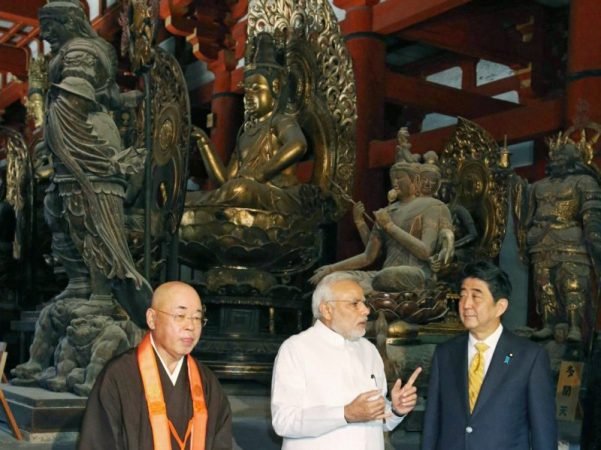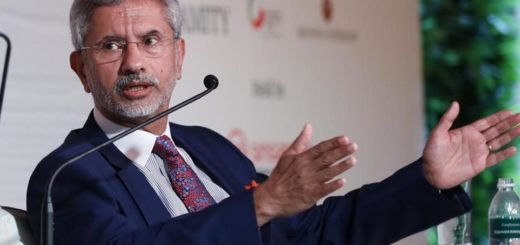Land of the Rising Sun & Incredible India: Soft Power Play

If there’s any country that went from being one of the most despised nations in the world for a few years after the 2nd World War, to rapidly rising ranks in people’s list of favourite places to visit and admire, it has to be Japan. From their efficient yet affordable vehicles, fancy innovative electronic equipment and infrastructural marvels to their unique cuisine, festivals and approach to day to day life, Japan has awed the entire world. Ever since the rebuilding of Japan in the post-war era, Japan has relied upon the USA as its closest ally. The American financial aid that the Japanese government received set into motion mechanisms that would encourage settlers from both nations to venture into each other’s lands for business purposes. These mechanisms eventually led to a sort of cultural hybridization.
The American hegemony was starting to gather great momentum amongst the Japanese masses that gradually attained something similar to neo-westernization while withholding most of their traditional values in place. As a result, modern Japan emerged which kept on evolving, adding new twists of their own to already existing problems and solutions, finally leading to the current post-modern Japan/Nippon as we know it. The Japanese people realized a long time ago in the 1980s that foreigners are very taken by their culture and that many foreign nationals even imitate bits and pieces of Japanese etiquettes; as such, their current Prime Minister Shinzo Abe, even decided to make it into a selling point under the “Cool Japan” initiative in 2010. Now, from the Indian perspective, Japan has not really made much of a cultural impact upon its people throughout the years; yes, India and Japan have maintained cordial ties since before the Indian independence in 1947 and have ventured together into the automobile manufacturing industries as well as other heavy machinery but apart from these developments, both the countries essentially treated each other as largely irrelevant to their respective national interests. It is only recently, post-2010, that significant changes in the Indo-Japanese relations have taken place. Moreover, the changes are not that subtle either; in a short amount of time, both governments have realized the massive importance of keeping each other in their respective spheres of influence.

India’s strengths in Soft Diplomacy on the other hand
The first element that unquestionably holds the supreme position in India’s soft power is its own highly diverse and rich history and culture dating all the way back to the pre-historic era. Throughout time immemorial, the subject and study of Indian culture have been of great interest to scholars of archaeology, historians, geographers and even scientists. The study of India as a whole even led to the birth of a particular field known as Indology which attracts minds brilliantly and otherwise from all over the world! India is home to all the religions the human race has to offer and this makes it a viable destination for tourists from other countries to take part in various festivities to enhance their “India Experience”. Since Buddhism itself originated within India, astute worshippers of the Buddha in countries in South-East Asia and East Asia find solace in visiting Bodh Gaya, a location in the Indian state of Bihar. Other instruments India has in its toolbox include the world-famous Yoga Day, Indian dance and music forms, the Taj Mahal and other grand architectures. All of these endeavours fall under the ambit of the Indian Council for Cultural Relations who not only try to propagate the Indian culture abroad but also promote greater domestic awareness and recognition of foreign cultures. The newest addition to the Indian soft power is Bollywood; despite not being as popular as its other entertainment counterparts, it certainly is rising to prominence as of late and foreigners take a great deal of fascination towards the uplifting music featured in Indian films.
Current people to people relations between India-Japan
Both the nations have the capacity to move beyond just the economic and military front; allowing and accepting entry into each other’s cultural spheres will be a step towards a better tie-up between them. As of now, there are almost 38,000 Indian nationals residing in Japan, employed across various sectors; most notably in IT. Migration from India to Japan dates back to the 1600s but it was only during the 1990s that the numbers took a sharp turn upwards due to surge in collaboration between Indian and Japanese automobile industries followed by Indian techies finding demand for their skills in cities like Minato, Osaka, Kobe and Setagaya. A lot of Japanese tech CEOs agree that Indians form a major part of the backbone of the country’s IT sector. India is currently home to approximately 9,900 Japanese citizens who reside there as employees and students. Over the last 2 decades, these numbers have gone up as well, although not in India’s favour. Generally, most of the people in both countries view each other in a positive light while the rest remain indifferent. It was only after former Japanese PM Yoshino Mori’s visit to India that state of affairs started looking more positive. In the 2000s, Indian migration to Japan started to increase again and only after Indian PM Narendra Modi’s coming to power did things start looking even better.

Way forward
Japanese media and entertainment broadcasts have started gaining popularity amongst Indian youths. The end of the 1990s saw the introduction of Japanese cartoons being aired on Indian television, resulting in watching these shows becoming a common household activity across India. The introduction of Sony PlayStations and other Japanese video game equipment in Indian markets have led to a slight rise in interest in other Japanese avenues as well such as their culture, festivals and their cuisine. The Japanese have time and again portrayed various figures from major Indian mythologies in their own works, something greatly welcomed by both countries simultaneously.
Osamu Tezuka, legendary mangaka wrote the biographical manga “Buddha” from 1972 to 1983. Recently, Japan has also supported the reconstruction of Nalanda University, an ancient Buddhist centre of learning and has agreed to provide financial assistance and recently approached the Indian government with a proposal. The cultural exchanges between the two countries created many parallels in their folklore. A modern popular culture based upon this folklore, such as works of fantasy fiction in manga and anime, sometimes bear references to common deities, demons and philosophical concepts; the Indian demon Asura was even depicted as the titular character in video game series “Asura’s Wrath”. The Indian goddess Saraswati, for example, is known as Benzaiten in Japan, Brahma is known as ‘Bonten’, Yama is known as ‘Enma’; they are all part of the traditional Japanese Buddhist pantheon.
This goes to show that there is great potential for further collaborations of this type and even more to take place in the future. Indian and Japanese tourists alike appreciate and enjoy each other’s festivities; the Indian Ministry of External Affairs (MEA) and Japanese Ministry of Foreign Affairs (MoFA) respectively have thought up of using cultural performance exchanges as a strategy to boost trade and defence ties between their governments. The more back and forth investments start taking place, the more push they will receive in terms of soft power. In recent years, India and Japan have strengthened bilateral ties through new initiatives and programmes ranging from economic and cultural linkages to defence and security. The year 2007 was celebrated as the Year of Friendship between the two countries. Japan gives 30 per cent of its overseas development assistance (ODA) to India and remains committed even in the period of the global economic downturn. For Example, Japan has granted almost $4 billion for the Delhi-Mumbai Industrial Corridor (DMIC). Enhanced trade between both nations will also serve as a counterbalance to China, a matter of common concern. This will help the Japanese deepen their trust more in India and begin relying upon it to a greater degree. Promotion of linguistic education will also serve the purpose of establishing efficient student exchange programs; if more importance is given to learning each other’s languages, a window of opportunities shall open up in multiple fields which basically translate to increase in employment! In any case, it has been reported that due to increasing Japanese investments in India, Japanese language professionals may have a tenfold rise in demand.

As an ending note, it would be very unwise on New Delhi’s and Tokyo’s part to continue undermining the importance of their individual soft power with regards to each other. A lot could be learnt from the “Cool Japan” scheme and thinkers and policymakers alike should immediately get to their work desks and come up with strategies to increase Indian cultural presence in the Land of the Rising Sun.



















